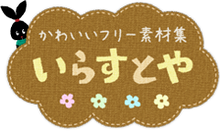あげる and くれる both mean 'give'.
But... it's a bit complicated...
But... it's a bit complicated...
- あげる is used when 'I give to someone' or 'Someone in my group gives to someone'.
- くれる means 'Someone gives me' or 'Someone outside my group gives to someone in my group'.
The point of view in each of the sentences below is 'boku' (me).
あげる and くれる (will give) - the plain form, present/future tense:
あげる and くれる (will give) - the plain form, present/future tense:
あげた and くれた (gave) - the plain form, past tense:
あげます and くれます (will give) - the masu form, present/future tense:
あげました and くれました (gave) - the masu form, past tense:
もらう is more straightforward. It means receive. Just note that the particle is に, even though we receive 'from' someone.
もらう (will receive) - the plain form, present/future tense:
もらう (will receive) - the plain form, present/future tense:
もらった (received) - the plain form, past tense:
もらいます (will receive) - the masu form, present/future tense:
もらいました (received) - the masu form, past tense:
Watch this video on あげる/くれる/もらう.
The is the best explanation I've come across.
The is the best explanation I've come across.












